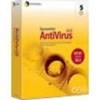Symantec 11281411 Administration Guide - Page 133
Setting exclusions, For virus sweep, manual, Auto-Protect, and scheduled scans, Symantec
 |
UPC - 037648327237
View all Symantec 11281411 manuals
Add to My Manuals
Save this manual to your list of manuals |
Page 133 highlights
Scanning for viruses and other threats 133 Configuring scan options Using the Symantec System Center, you can set exclusions for specific file extensions and folders. In addition, certain Symantec AntiVirus scans allow exclusion by named folder (for example, you can exclude scans of the path C:\Temp\Install). To maintain security, you cannot view or exclude specific files from the Symantec System Center. You can, however, exclude specific files using the Symantec AntiVirus client or server user interface. You may want to exclude files that trigger false positive alerts. For example, if you used another virus scanning program to clean infected files and the program did not completely remove the virus code, the file may be harmless but the disabled virus code might cause Symantec AntiVirus to register a false positive. Check with Symantec Technical Support if you are not sure if a file is infected. Table 3-5 describes exclusions. Table 3-5 Exclusions by object type Object type Server group Server Client group NetWare servers Exclusions available Server scans: File extensions and named folders ■ Server scans: File extensions, drivers, files, and folders ■ Client scans: File extensions, drivers, and named folders Client scans: File extensions, drivers, and named folders Files by drivers and named folders; you cannot exclude files by file extension Setting exclusions Symantec AntiVirus exclusions behavior is as follows: ■ When Symantec AntiVirus applies exclusions, the excluded items are not scanned. If the file is not excluded, it is scanned. ■ For virus sweep, manual, Auto-Protect, and scheduled scans, Symantec AntiVirus takes no action on excluded files. Enabling and disabling exclusions can improve performance depending on the situation. For example: ■ If you copied a large folder that was in the exclusions list and the exclusions setting was enabled, the copying process would not take as long since the folder's contents would be excluded. ■ If you copied a large folder that was not in the exclusions list, disabling exclusions would improve performance.















